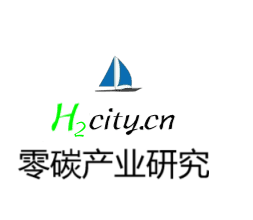Reciprocating, Centrifugal, Rotary Screw, EHCs and Metal Hydride Hydrogen Compressors:
? 1. Reciprocating Hydrogen Compressors:
1.1- Reciprocating compressors as per API 618:
Speeds: 277 ≤ rpm ≤ 450;
Stroke range: 9 inches ≤ X ≤ 18 inches (229 mm ≤ X ≤ 458 mm).
1.2- High-speed reciprocating compressors as per API 11P:
Stroke range: 5 inches ≤ X ≤ 8 inches (127 mm ≤ X ≤ 203 mm).
1.3- Parameters:
- Pressure (dry) ≤ 170 bar;
- Pressure (lubed) ≤ 300 bar (lubed);
- Power → 1 to 5 MW;
- API 618 recommendation for unit loading:
• lubricated services → 10 psi (69 kPa);
• non-lubricated applications → 5 psi (34.5 kPa).
1.4 Reciprocating hydrogen compressors are commonly used in lower hydrogen volumes, and higher hydrogen pressures. and is better suited for part-load operations.
? 2. Centrifugal Hydrogen Compressors:
2-1. Can be utilised up to 200 bar and 100% H2 content;
2-2. Centrifugal compressors in natural gas pipelines can be upgraded to handle up to 40% hydrogen;
2-3. Centrifugal hydrogen compressors are utilised for high-volume flow and relatively lower pressure ratios.
? 3. Rotary Screw Hydrogen Compressors:
3.1- Rotary screw compressors are a type of positive displacement compressor that rotates to compress air or gas;
3.2- Helically cut rotor profiles consist of male and female elements that work in pairs to achieve compression;
3.3- In the oil-flooded configuration, the rotors rotate in opposite directions, with the male rotor driving the female rotor;
3.4-In an oil-free configuration, the rotors are synchronised by the timing gear.
? 4. EHCs Hydrogen Compressors:
4.1- EHC systems similar to proton exchange membrane fuel cells (PEMFCs) include PEMs, catalyst layers (CLs), gas diffusion layers (GDLs), flow field plates, and end plates.
Anode: H2(Pa)→ (2H+)+ 2e−
Cathode: (2H+)+2e− →H2 (Pc)
Overall: H2(Pa)→ H2 (Pc)
Pc = hydrogen pressures @ the high-pressure cathode side;
Pc = hydrogen pressures @ the low-pressure anode side.
4.2- The rate of the hydrogen reaction through PEMs as per Faraday's law:
JH2, theoretical = dn/dt = I/2F
n = inlet flow in mol
F = Faraday’s constant = 9.648 × 10^4 C mol−1
I = current in A
? 5. Metal Hydride Hydrogen Compressors:
5.1- Hystorsys metal hydride compressors use solid-state technology to transfer heat and hydrogen mass during absorption and desorption in the reaction bed;
5.2- Hydrogen compressor uses a metal hydride vessel and a heat exchanger to store and release hydrogen;
5.3- Hydrogen is absorbed by the alloy during charging, forming metal hydride. The saturated metal hydride is heated to release hydrogen at high pressures;
5.4- Two or more metal hydride vessels can be used for continuous hydrogen compression;
5.5- Two vessels absorb and desorb hydrogen in opposite phases.
For reference and more info, see my attached PDF.
平台声明:该文观点仅代表作者本人,零碳未来网 系信息发布平台,我们仅提供信息存储空间服务。






发表评论 取消回复